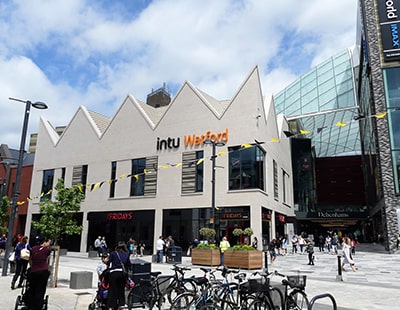In this guest piece, Andy Jones, Corporate & Build To Rent Director at LRG, looks at whether commercial property can help solve the housing supply crisis.
Available rental stock is in short supply, although we’re seen considerable improvement since last winter. A recent Propertymark report showed that each UK lettings agency branch had on average 10.9 properties available to rent in August this year, with an average of 141 applicants registered per member branch.
Meanwhile, in our current time of economic flux, we are seeing many pubs, shops and banks across the country shutting their doors for good. That opens the door for the potential to turn public and commercial buildings into housing, to boost the current lack of stock in the rental market.
But can reinventing public buildings for residential use help rebalance the lank of rental stock in the UK?
The advantages of reinvention
There are several advantages to converting an old public building – you typically get a lot of property for your money, there is often car parking, and they are usually situated in the heart of a town or village in a highly sought-after central location.
People who look for period features can also get these on the exterior while benefiting from modern interiors that are energy efficient. And of course at a time when rental stock is significantly strained, bring additional properties to the market quickly through renovation, rather than rebuilding is a strong benefit to both landlords and tenants.
Many such public buildings including banks, churches and pubs are full of character. One such in demand converted public house – The Cock Inn near Braintree in Essex – famous for previously being the location of Jamie Oliver cooking shows, has now been adapted into a family house called Lime Tree Cottage.
In the buy-to-let sector, we expect to see owners of office buildings and retailers increasingly moving into corporate lettings – as John Lewis has already done. John Lewis is targeting suburban locations and commuter towns in the South East with plans to use its existing commercial property portfolio to build 10,000 rental homes.
The company, which owns Waitrose, said it would build accommodation over supermarkets in Bromley and West Ealing in Greater London and replace a vacant John Lewis warehouse in Reading with a development of one-and two-bedroom flats.
Using existing structures is good for the environment too because you need less power and raw materials to transform to new residences – easing the supply issues in the housing market without causing unnecessary eco damage.
The transition in practice
In response to an over-supply of commercial units and an under-supply of rental properties, there is considerable potential to convert existing public or commercial buildings and in doing so to create a profitable property portfolio.
One such example of a commercial building transitioning to housing is the Dukesbridge House project in Reading, which LRG recently oversaw. The former office building has been newly converted into 62 one- and two-bed apartments which overlook the River Kennet. Every unit was snapped up quickly, indicating the high demand and low supply for rental properties in the town and the market in general.
As the success of the Dukesbridge House shows there is a buoyant market in the development of commercial properties into the residential sector. That is good news for owners of commercial buildings, architects and developers at a time when some commercial buildings are under-utilized.
The change in permitted development
Of course, this is all possible because of the change in permitted development rules. The regulation change has made it easier for developers to reinvent former public and commercial buildings into residential use.
Such ruling allows commercial buildings to be adapted and reclassified for residential use without going through planning permission. This makes the process faster and more efficient, which is definitely needed to increase the level of rental stock available in the UK.
However not all parties are positive about the speed that permitted development allows. Sefton Council in Bootle are considering a removal of the rights to stop ‘low quality’ offices and shops in one town from being converted into flats without planning permission. The local authority hopes the move could keep accommodation to a high standard.
Therefore it is vital for developers to ensure that property conversions aren’t rushed, and all residences support the wellbeing of the tenant. Or as Sefton Council has asked to “promote and manage sustainable growth, regeneration and investment in the town”.
The dearth of rental properties is being felt across the country. We need more homes available to support those already struggling to enter the rental market. The transition from of commercial properties into quality residential opportunities is a clear way to deliver this extra rental stock and support struggling tenants find their home.
*Andy Jones is Corporate & Build To Rent Director at LRG
























Join the conversation
Be the first to comment (please use the comment box below)
Please login to comment